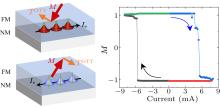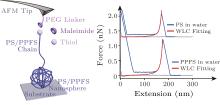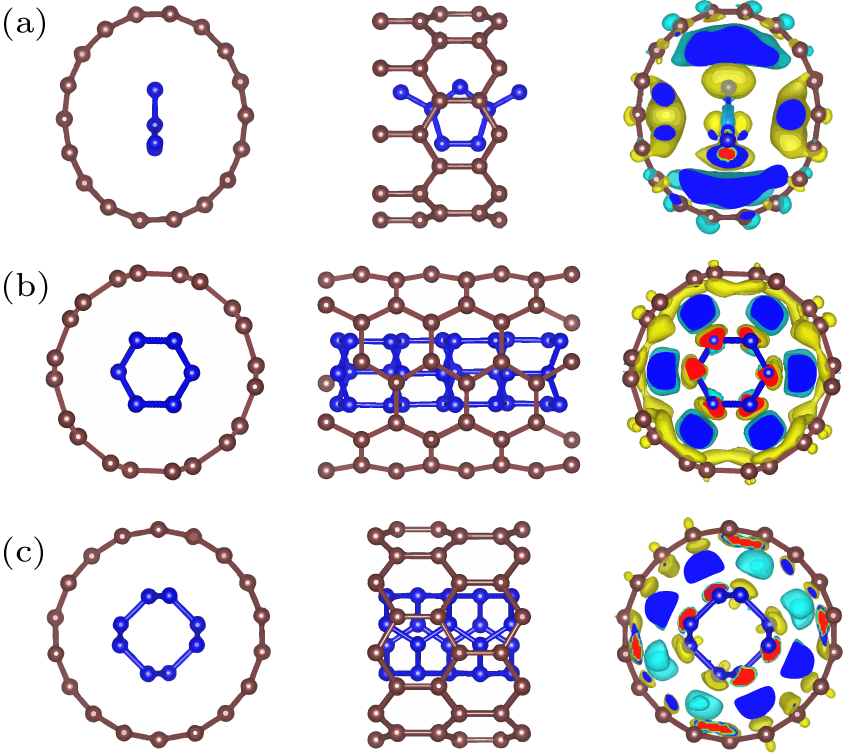|
|
Realization of Fast All-Microwave Controlled-Z Gates with a Tunable Coupler
Shaowei Li, Daojin Fan, Ming Gong, Yangsen Ye, Xiawei Chen, Yulin Wu, Huijie Guan, Hui Deng, Hao Rong, He-Liang Huang, Chen Zha, Kai Yan, Shaojun Guo, Haoran Qian, Haibin Zhang, Fusheng Chen, Qingling Zhu, Youwei Zhao, Shiyu Wang, Chong Ying, Sirui Cao, Jiale Yu, Futian Liang, Yu Xu, Jin Lin, Cheng Guo, Lihua Sun, Na Li, Lianchen Han, Cheng-Zhi Peng, Xiaobo Zhu, and Jian-Wei Pan
Chin. Phys. Lett. 2022, 39 (3):
030302
.
DOI: 10.1088/0256-307X/39/3/030302
The development of high-fidelity two-qubit quantum gates is essential for digital quantum computing. Here, we propose and realize an all-microwave parametric controlled-Z (CZ) gates by coupling strength modulation in a superconducting Transmon qubit system with tunable couplers. After optimizing the design of the tunable coupler together with the control pulse numerically, we experimentally realized a 100 ns CZ gate with high fidelity of 99.38%$ \pm 0.34$% and the control error being 0.1%. We note that our CZ gates are not affected by pulse distortion and do not need pulse correction, providing a solution for the real-time pulse generation in a dynamic quantum feedback circuit. With the expectation of utilizing our all-microwave control scheme to reduce the number of control lines through frequency multiplexing in the future, our scheme draws a blueprint for the high-integrable quantum hardware design.
|
|
|
High Energy Inner Shell Photoelectron Diffraction in CO$_2$
Xiaohong Li, Bocheng Ding, Yunfei Feng, Ruichang Wu, Lifang Tian, Jianye Huang, and Xiaojing Liu
Chin. Phys. Lett. 2022, 39 (3):
033401
.
DOI: 10.1088/0256-307X/39/3/033401
Photoelectron diffraction is an effective tool to probe the structures of molecules. The higher the photoelectron kinetic energy is, the higher order the diffraction pattern is disclosed in. Up to date, either the multi-atomic molecule with the photoelectron kinetic energy below 150 eV or the diatomic molecule with 735 eV photoelectron has been experimentally reported. In this study, we measured the diffraction pattern of C $1s$ and O $1s$ photoelectrons in CO$_2$ with 319.7 and 433.5 eV kinetic energies, respectively. The extracted C–O bond lengths are longer than the C–O bond length at the ground state, which is attributed to the asymmetric fragmentation that preferentially occurs at the longer chemical bond side during the zero-energy asymmetric vibration.
|
|
|
High Energy Density Polymeric Nitrogen Nanotubes inside Carbon Nanotubes
Chi Ding, Junjie Wang, Yu Han, Jianan Yuan, Hao Gao, and Jian Sun
Chin. Phys. Lett. 2022, 39 (3):
036101
.
DOI: 10.1088/0256-307X/39/3/036101
Polymeric nitrogen as a new class of high energy density materials has promising applications. We develop a new scheme of crystal structure searching in a confined space using external confining potentials fitted from first-principles calculations. As a showcase, this method is employed to systematically explore novel polymeric nitrogen structures confined in single-walled carbon nanotubes. Several quasi-one-dimensional (1D) single-bonded polymeric nitrogen structures are realized, two of them are composed of nanotubes instead of chains. These new polymeric nitrogen phases are mechanically stable at ambient pressure and temperature according to phonon calculations and ab initio molecular dynamics simulations. It is revealed that the stabilization of zigzag and armchair chains confined in carbon nanotubes (CNTs) are mostly attributed to the charge transfer from carbon to nitrogen. However, for the novel nitrogen nanotube systems, electrons overlapping in the middle space provide strong Coulomb repulsive forces, which not only induce charge transfer from the middle to the sides but also stabilize the polymeric nitrogen. Our work provides a new strategy for designing novel high-energy-density polymeric nitrogen materials, as well as other new materials with the help of confined space inside porous systems, such as nanotubes, covalent organic frameworks, and zeolites.

|
|
|
Novel Boron Nitride Polymorphs with Graphite-Diamond Hybrid Structure
Kun Luo, Baozhong Li, Lei Sun, Yingju Wu, Yanfeng Ge, Bing Liu, Julong He, Bo Xu, Zhisheng Zhao, and Yongjun Tian
Chin. Phys. Lett. 2022, 39 (3):
036301
.
DOI: 10.1088/0256-307X/39/3/036301
Both boron nitride (BN) and carbon (C) have $sp$, $sp^{2}$ and $sp^{3}$ hybridization modes, thus resulting in a variety of BN and C polymorphs with similar structures, such as hexagonal BN (hBN) and graphite, cubic BN (cBN) and diamond. Here, five types of BN polymorph structures are proposed theoretically, inspired by the graphite-diamond hybrid structures discovered in a recent experiment. These BN polymorphs with graphite-diamond hybrid structures possess excellent mechanical properties with combined high hardness and high ductility, and also exhibit various electronic properties such as semi-conductivity, semi-metallicity, and even one- and two-dimensional conductivity, differing from known insulators hBN and cBN. The simulated diffraction patterns of these BN hybrid structures could account for the unsolved diffraction patterns of intermediate products composed of so-called “compressed hBN” and diamond-like BN, caused by phase transitions in previous experiments. Thus, this work provides a theoretical basis for the presence of these types of hybrid materials during phase transitions between graphite-like and diamond-like BN polymorphs.
|
|
|
A Free-Volume Model for Thermal Expansion of Metallic Glass
Tong Lu, Song Ling Liu, Yong Hao Sun, Wei-Hua Wang, and Ming-Xiang Pan
Chin. Phys. Lett. 2022, 39 (3):
036401
.
DOI: 10.1088/0256-307X/39/3/036401
Many mechanical, thermal and transport behaviors of polymers and metallic glasses are interpreted by the free-volume model, whereas their applications on thermal expansion behaviors of glasses is rarely seen. Metallic glass has a range of glassy states depending on cooling rate, making their coefficients of thermal expansion vary with the glassy states. Anharmonicity in the interatomic potential is often used to explain different coefficients of thermal expansion in crystalline metals or in different metallic-glass compositions. However, it is unclear how to quantify the change of anharmonicity in the various states of metallic glass of the same composition and to connect it with coefficient of thermal expansion. In the present work, isothermal annealing is applied, and the dimensional changes are measured for La$_{62}$Al$_{14}$Cu$_{11.7}$Ag$_{2.3}$Ni$_{5}$Co$_{5}$ and Zr$_{52.5}$Cu$_{17.9}$Ni$_{14.6}$Al$_{10}$Ti$_{5}$ metallic glasses, from which changes in density and the coefficients of thermal expansion of the specimens are both recorded. The coefficients of thermal expansion linearly decrease with densification reflecting the role of free volume in thermal expansion. Free volume is found to have not only volume but also entity with an effective coefficient of thermal expansion similar to that of gases. Therefore, the local regions containing free volume inside the metallic glass are gas-like instead of liquid-like in terms of thermal expansion behaviors.
|
|
|
Structure and Wettability Engineering of Polycrystalline Diamond Films Treated by Thermally Oxidation, Second Growth and Surface Termination
Linfeng Wan, Caoyuan Mu, Yaofeng Liu, Shaoheng Cheng, Qiliang Wang, Liuan Li, Hongdong Li, and Guangtian Zou
Chin. Phys. Lett. 2022, 39 (3):
036801
.
DOI: 10.1088/0256-307X/39/3/036801
High-quality polycrystalline diamond films with dominated (100)-oriented grains are realized by combining the thermally oxidation and the homogeneous second growth processes. Moreover, we investigate the wettability property of the polycrystalline diamonds in various stages. Different surface structures (with various grain sizes, voids, and orientations, etc.) and terminations (hydrogen or oxygen) have significant effects on the wettability of polycrystalline diamond films. The wettability is further closely related to the polarity of solutions. By measuring the contact angle and calculating the dispersion and polarity components, we estimate the surface energy of polycrystalline diamond films, and explore the factors affecting the surface energy. The modulations in growth quality and wettability property of polycrystalline diamond films provide valuable data for development of diamond-based multiple devices in practical applications.
|
|
|
Recent Advances in Moiré Superlattice Structures of Twisted Bilayer and Multilayer Graphene
Xiao-Feng Li, Ruo-Xuan Sun, Su-Yun Wang, Xiao Li, Zhi-Bo Liu, and Jian-Guo Tian
Chin. Phys. Lett. 2022, 39 (3):
037301
.
DOI: 10.1088/0256-307X/39/3/037301
Twisted bilayer graphene (TBG), which has drawn much attention in recent years, arises from van der Waals materials gathering each component together via van der Waals force. It is composed of two sheets of graphene rotated relatively to each other. Moiré potential, resulting from misorientation between layers, plays an essential role in determining the band structure of TBG, which directly relies on the twist angle. Once the twist angle approaches a certain critical value, flat bands will show up, indicating the suppression of kinetic energy, which significantly enhances the importance of Coulomb interaction between electrons. As a result, correlated states like correlated insulators emerge from TBG. Surprisingly, superconductivity in TBG is also reported in many experiments, which drags researchers into thinking about the underlying mechanism. Recently, the interest in the atomic reconstruction of TBG at small twist angles comes up and reinforces further understandings of properties of TBG. In addition, twisted multilayer graphene receives more and more attention, as they could likely outperform TBG although they are more difficult to handle experimentally. In this review, we mainly introduce theoretical and experimental progress on TBG. Besides the basic knowledge of TBG, we emphasize the essential role of atomic reconstruction in both experimental and theoretical investigations. The consideration of atomic reconstruction in small-twist situations can provide us with another aspect to have an insight into physical mechanism in TBG. In addition, we cover the recent hot topic, twisted multilayer graphene. While the bilayer situation can be relatively easy to resolve, multilayer situations can be really complicated, which could foster more unique and novel properties. Therefore, in the end of the review, we look forward to future development of twisted multilayer graphene.
|
|
|
Orbit-Transfer Torque Driven Field-Free Switching of Perpendicular Magnetization
Xing-Guo Ye, Peng-Fei Zhu, Wen-Zheng Xu, Nianze Shang, Kaihui Liu, and Zhi-Min Liao
Chin. Phys. Lett. 2022, 39 (3):
037303
.
DOI: 10.1088/0256-307X/39/3/037303
The reversal of perpendicular magnetization (PM) by electric control is crucial for high-density integration of low-power magnetic random-access memory. Although the spin-transfer torque and spin-orbit torque technologies have been used to switch the magnetization of a free layer with perpendicular magnetic anisotropy, the former has limited endurance because of the high current density directly through the junction, while the latter requires an external magnetic field or unconventional configuration to break the symmetry. Here we propose and realize the orbit-transfer torque (OTT), that is, exerting torque on the magnetization using the orbital magnetic moments, and thus demonstrate a new strategy for current-driven PM reversal without external magnetic field. The perpendicular polarization of orbital magnetic moments is generated by a direct current in a few-layer WTe$_{2}$ due to the existence of nonzero Berry curvature dipole, and the polarization direction can be switched by changing the current polarity. Guided by this principle, we construct the WTe$_{2}$/Fe$_{3}$GeTe$_{2}$ heterostructures to achieve the OTT driven field-free deterministic switching of PM.

|
|
|
Dynamic Cantilever Magnetometry of Paramagnetism with Slow Relaxation
Zhiyu Ma, Kun Fan, Qi Li, Feng Xu, Lvkuan Zou, Ning Wang, Li-Min Zheng, and Fei Xue
Chin. Phys. Lett. 2022, 39 (3):
037501
.
DOI: 10.1088/0256-307X/39/3/037501
Dynamic cantilever magnetometry is a sensitive method that has been widely used in studying magnetic anisotropy in ferromagnetic materials and Fermi surface in quantum materials. We study a cobalt-iridium metal-metalloligand coordination polymer using dynamic cantilever magnetometry. The experimental data of dynamic cantilever magnetometry are well explained using the proposed model for Langevin paramagnetism with slow relaxation. Based on the proposed model, we calculate the magnetization and magnetic susceptibility of paramagnetic materials from frequency shifts of a cantilever. The extracted magnetization and magnetic susceptibility are consistent with those obtained from conventional DC and AC magnetometry. The proposed slow relaxation picture is probably a general model for explaining dynamic cantilever magnetometry data of paramagnetic materials, including previously observed dynamic cantilever magnetometry data of paramagnetic metals [Gysin et al. 2011 Nanotechnology 22 285715].
|
|
|
Nanoscale Impact Ionization and Electroluminescence in a Biased Scanning-Tunneling-Microscope Junction
Lehua Gu, Shuang Wu, Shuai Zhang, and Shiwei Wu
Chin. Phys. Lett. 2022, 39 (3):
037801
.
DOI: 10.1088/0256-307X/39/3/037801
Electroluminescence from a p-type GaAs(110) surface was induced by tunneling electrons in a scanning tunneling microscope under both polarities of bias voltage. The optical spectra exhibit a polarity-independent luminescence peak at 1.47 eV resulting from the exciton recombination. However, the quantum yield of photon emission at negative bias voltage is two orders of magnitude weaker than that at positive bias voltage. Moreover, the luminescence at negative bias voltage shows the linear dependence of bias voltage, distinct from the rapid rise due to resonant electron injection at positive bias. Furthermore, the threshold bias voltage for electroluminescence at negative bias is nearly twice the bandgap of GaAs, not simply satisfying the energy conservation for the creation of an electron–hole pair. Through theoretical calculation, we propose an impact ionization model to nicely explain the newly observed electroluminescence at negative bias voltage. We believe that this mechanism of impact ionization could be readily applied to other nanoscale optoelectronics including 2D semiconductors and 1D nanostructures.
|
|
|
Probing the Air Storage Failure Mechanism of Ni-Rich Layered Cathode Materials
Qingyu Dong, Ruowei Yi, Jizhen Qi, Yanbin Shen, and Liwei Chen
Chin. Phys. Lett. 2022, 39 (3):
038201
.
DOI: 10.1088/0256-307X/39/3/038201
Ni-rich layered oxide cathode materials, such as LiNi$_{0.83}$Co$_{0.12}$Mn$_{0.05}$O$_{2}$ (NCM811), exhibit high specific capacity and low cost, and become cathode material preference of high-energy-density Li-ion batteries. However, these cathode materials are not stable and will form Li-poor reconstructed layers and alkaline compounds (Li$_{2}$CO$_{3}$, LiOH) on the surface during the storage and processing in humid air, resulting in serious deterioration of electrochemical properties. During the past two decades, the consensus on the surface instability mechanism during humid air storage has not been reached. The main controversy focuses on the unstable octahedron mechanism and the Li/H exchange mechanism. Herein, we investigate the instability mechanism in the humid air by conducting scanning electronic microscopy, scanning transmission electron microscopy, and x-ray photoelectron spectroscopy analysis on NCM811 samples stored in designed atmospheres, etc., and realize that the surface instability of the NCM811 during storage should be mainly originated from Li/H exchange when it contacts with moisture.
|
|
|
Fluorination Increases Hydrophobicity at the Macroscopic Level but not at the Microscopic Level
Weishuai Di, Xin Wang, Yanyan Zhou, Yuehai Mei, Wei Wang, and Yi Cao
Chin. Phys. Lett. 2022, 39 (3):
038701
.
DOI: 10.1088/0256-307X/39/3/038701
Hydrophobic interactions have been studied before in detail based on hydrophobic polymers, such as polystyrene (PS). Because fluorinated materials have relatively low surface energy, they often show both oleophobicity and hydrophobicity at the macroscopic level. However, it remains unknown how fluorination of hydrophobic polymer influences hydrophobicity at the microscopic level. We synthesized PS and fluorine-substituted PS (FPS) by employing the reversible addition-fragmentation chain transfer polymerization method. Contact angle measurements confirmed that FPS is more hydrophobic than PS at the macroscopic level due to the introduction of fluorine. However, single molecule force spectroscopy experiments showed that the forces required to unfold the PS and FPS nanoparticles in water are indistinguishable, indicating that the strength of the hydrophobic effect that drives the self-assembly of PS and FPS nanoparticles is the same at the microscopic level. The divergence of hydrophobic effect at the macroscopic and microscopic level may hint different underlying mechanisms: the hydrophobicity is dominated by the solvent hydration at the microscopic level and the surface-associated interaction at the macroscopic level.

|
16 articles
|




